Caucasian hellebore: description, planting and care

The arrival of warmth after winter frosts will mark the most beautiful time when nature comes to life, everything begins to turn green and bloom. Earlier than others, in natural conditions and in the garden, the Caucasian hellebore blooms. This plant has an interesting appearance, a fairly wide variety of colors and is well suited for decorating any site or garden. To grow a culture on your own, you need to know its features, the planting procedure, the nuances of care and the breeding options for the hellebore.
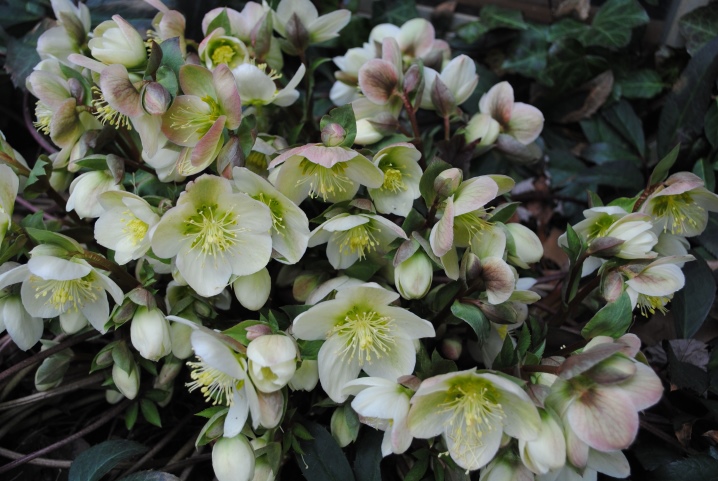
Peculiarities
The Caucasian hellebore is a plant that grows equally well both in natural conditions and in the garden. This crop belongs to the buttercup family and has more than 20 varieties. Since hellebore is a perennial, it is very convenient to grow it in the garden, and early flowering makes this plant a favorite among gardeners.
To get to know this flower better, you need to study its description well. The root system of the Caucasian hellebore is strong, but the roots are short, the leaves are located near the roots and have a dissected structure. The flowers are formed on stems, have a cupped shape, and can be presented in white, yellow, pink, purple and violet colors. In addition, bicolor varieties of this plant have been bred, and some varieties have a double flower structure.
Hellebore grows in the mountains of Europe and Asia, a large number of plants can be seen on the Balkan Peninsula, but in our latitudes this culture is quite widespread. Due to its early flowering, beautiful appearance, excellent winter hardiness and drought resistance, hellebore is in demand, but like other buttercups, it is poisonous.
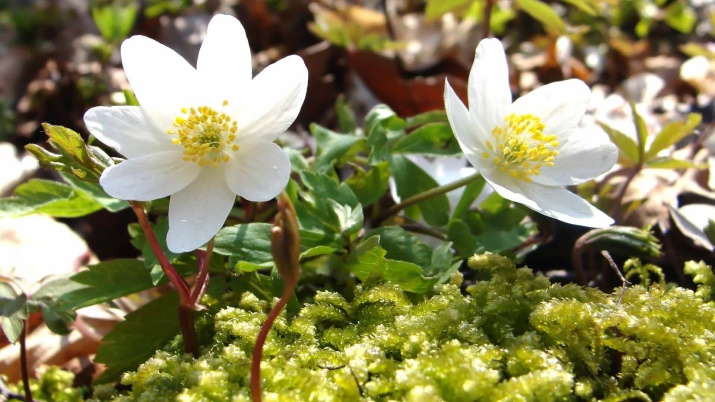
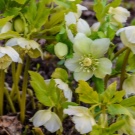


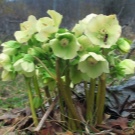

With proper care and use, this medicinal herb brings many benefits, and with excessive and uncontrolled use, it causes negative consequences for humans.
Among the most popular varieties and types are distinguished:
- hellebore black;
- Oriental;
- Caucasian.

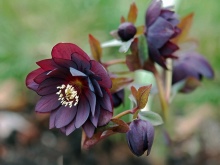
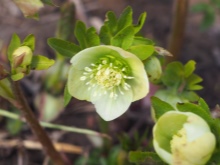
Each of them has its own characteristics, climatic and territorial preferences, flowering time and color palette. Despite some differences, the procedure for planting and leaving them is similar.
How to plant?
In order for the planting of the Caucasian hellebore to be successful, you need to find a suitable place for it and choose the right soil. These plants do not like the sun and do not bloom well in open areas., while in shaded areas, abundant growth and long-term varied flowering can be observed. A significant role in the process of growth and development is played by the soil in which the flower will be placed; a clayey, loose area with good drainage can be considered optimal for it. The soil should be neutral in acidity.
The hellebore belongs to a perennial culture, so it should be planted so that it will not be moved anywhere in the next 5-10 years., since the plant does not like the change of location. For the most comfortable growing conditions, it is worth choosing a place for planting among trees and bushes, where the soil will be moist enough, and the plants will be shaded from tall crops.
To plant a plant, you need to choose the right time and season; the culture is best acclimated to a new place in mid-spring and early autumn.
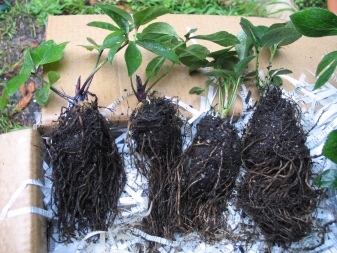
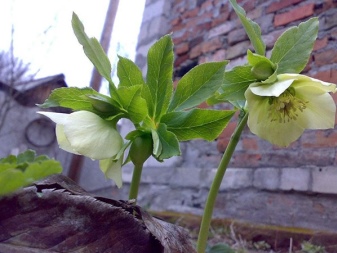
In April, the weather is already quite stable and frosts usually do not happen, so all green spaces are confidently growing and beginning to bloom, and in September it is still quite warm so that only the planted bush can take root and prepare for winter.
To plant a hellebore, you need to dig a hole 35 cm deep, the width should be about the same. The bushes do not grow too abundantly, so they can be planted at a distance of about 40 cm from each other. The hellebore, ready for planting, must be placed in the prepared recess, well spread the roots along the drainage layer mixed of gravel and sand. To provide the culture with good survival and help it grow faster, manure is poured onto the bottom of the pit, which makes up almost half of the content of the soil with which the bush is buried.
After filling the hole with manure and clay soil and compacting the soil, you need to water the plant well and carefully care for it for a month after planting.
If all the actions were done correctly, then the culture will quickly take root and in a few years it will delight with early and very beautiful flowering.
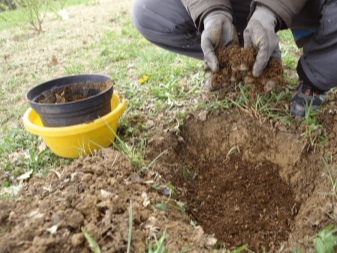
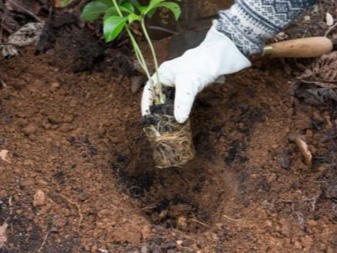
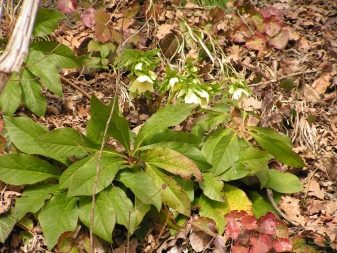

How to take care of it properly?
Caring for the Caucasian hellebore is not difficult, but requires certain knowledge. The most important period when a crop needs extra care is after planting. Within a month, you need to water the bush abundantly, monitor its condition, weed and loosen the soil. It is important to clear the soil from old leaves in the spring, otherwise rotting may begin, in the summer to provide watering as needed and to keep the garden clean.
If you provide clean and loose soil, as well as timely watering, then the hellebore will bloom for a long time and beautifully. To make the plants more hardy, you need to apply fertilizer to the soil. The most suitable for the hellebore will be bone meal and mineral fertilizers, which are added to the soil 1-2 times throughout the year. After the plant has finished blooming, it is necessary to mulch the soil around it by mixing it with compost.
Hellebore leaves appear only after the plant has faded.
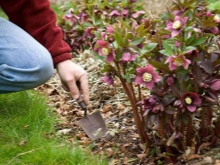
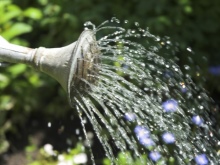

To stimulate the faster growth of beautiful leathery leaves, you can trim the stems after the flower has wither. Green bushes will delight the eye until the very frost, and by spring they will need to be cut off so that new shoots are healthier and more beautiful.
Reproduction methods
In view of the beauty and very early flowering, many gardeners strive to grow Caucasian hellebore on their site. To achieve strong and healthy shoots blooming with a variety of flowers, you need to be able to properly propagate this culture.
The easiest and surest way is to use seeds. To propagate hellebore in this way, you need to collect seeds that ripen in mid to late summer. In order for the seed to grow quickly, you need to place it in a humus substrate.
The seeds are placed in specially prepared soil, sinking no more than 1.5 cm, and remain there until spring. From the first days of March, the seeds will begin to "wake up" and germinate. As soon as 2 or more leaves are formed on the sprouts, they must be dived, and then planted in a permanent place in the open ground. If everything is done correctly, the sprouts will quickly take root and grow, and the bush will please with flowering only after 2-3 years.
If there are already adult hellebore bushes on the site, growing there from 5 years, then they can be propagated by dividing the bush. It is best to divide the bush after it has finished blooming, while the cuts must be treated with crushed coal.
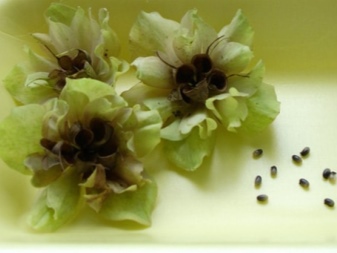
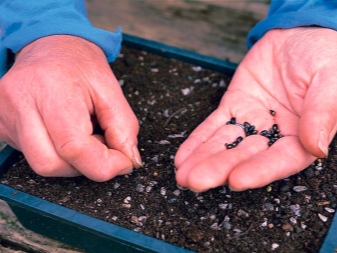

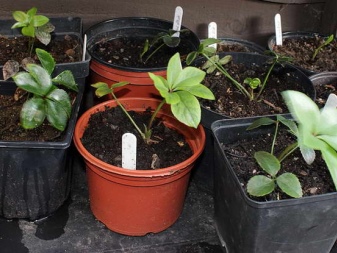
When choosing the time for this procedure, it is worth considering plant varieties. It is recommended to plant the black hellebore in the spring, and the eastern hellebore in the fall. Since the plant is considered poisonous, it is better to work with it with gloves, otherwise the juice released during the separation of the roots can get on the skin, leaving burns on it.
Watering
Watering the Caucasian hellebore should be carried out as needed. When grown in mild climates with frequent rains, there is no need for additional moisture. If the culture grows in a very hot climatic zone, then it is necessary to assess the condition of the soil: if it is soft and sufficiently moist, then watering is not required. The main thing is to prevent the appearance of an earthen crust, which does not allow air to pass to the roots and nourish the plant.
Within a month after planting in open ground, the bush is watered with a sufficient amount of water. Usually one liter of moisture is poured under one plant. So that the sun does not dry out the moisture, and the droplets do not spoil the foliage, being on it in the daytime, it is recommended to water in the evening.
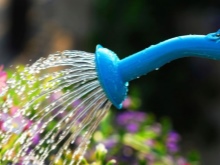
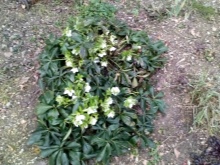
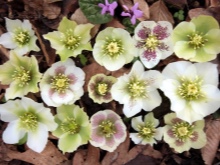
The need for watering the hellebore will be absent for those who live in a climate where a lot of snow falls in winter, which saturates the soil well with moisture. It is impossible to overmoisten the culture - this negatively affects its development and flowering.
Fertilizer
The Caucasian hellebore is a very unpretentious plant that almost does not need moisture and additional feeding. He receives most of the substances useful and necessary for himself from soil and water. If the culture is grown in the garden, then it makes sense to enhance its flowering and help in the development of foliage, for which additives are added to the soil. It is best to add bone meal and double superphosphate to the soil.
In addition to fertilizing the root system, you can also use foliar supplements in the form of trace elements, which should be used on a warm and dry day. A well-formed shrub with lush and healthy foliage will give an abundant bloom within a year that will beautify any area.

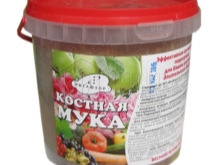

With proper care of the hellebore, you can protect it from diseases and pests, but if they do appear, it is important to quickly deal with them.
Diseases and pests
Such pests are considered the most dangerous for the plant.
- Gastropods - snails and slugs that absorb the leaves of the plant. To get rid of them, you need to personally collect all the representatives from the bushes.
- Caterpillars of the hop fineworm, aphidsthat harm foliage, threatening the life of the entire culture. You can deal with pests with insecticides.
- Mice eat the culture, completely destroying it. You can deal with them with the help of baits with poison.

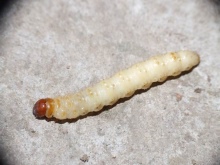
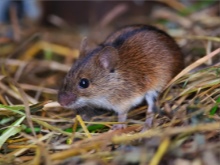
Among the diseases that most often affect the hellebore are the following.
- Ring spot - the affected leaves are cut and burned, and the plant is treated with fungicides.
- Anthracnose - brown-black spots with a ring pattern that appear on foliage. Problematic areas are cut, and the bushes are sprayed with preparations containing copper.
- Downy mildew - there is a lack of growth of new leaves, and the old ones begin to deform, and dark spots appear on the lower part. Infected areas are cut and the bushes are sprayed with copper oxychloride or Previkur.
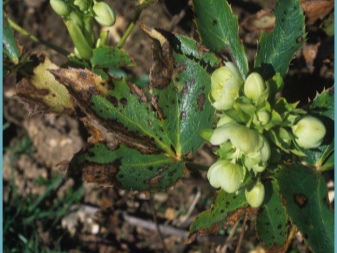
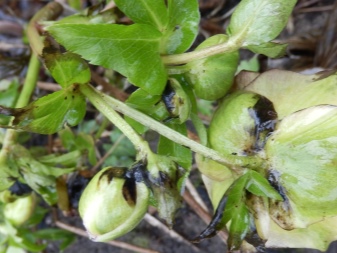
If you take care of the hellebore correctly, then there are usually no diseases and pests on it. If they appear, it is worth removing the cause and reconsidering the way of caring for the crop.
For planting, care, cultivation and reproduction of hellebore, see the next video.







































































































The comment was sent successfully.